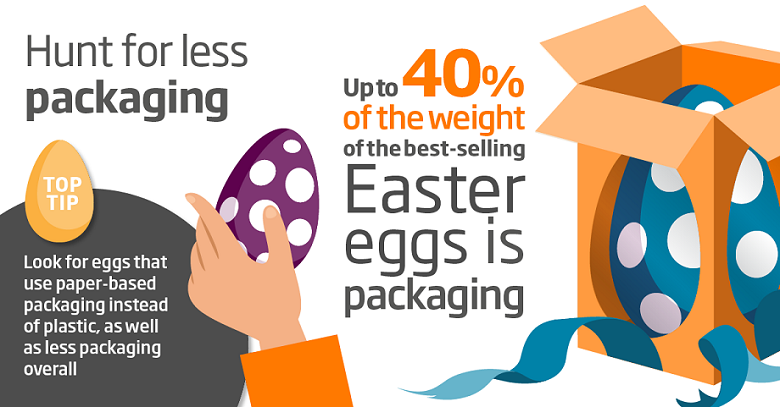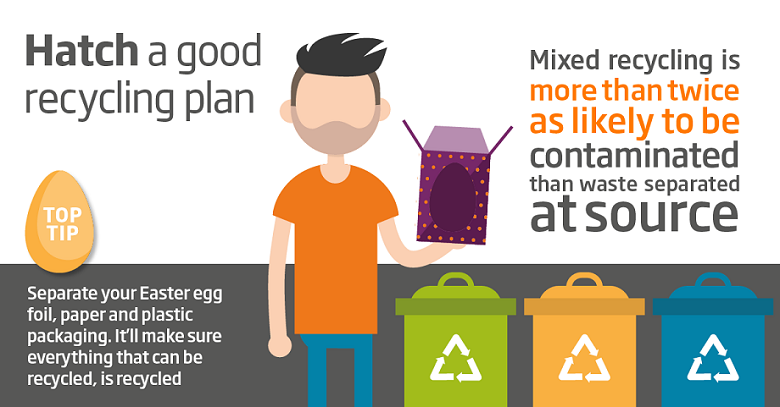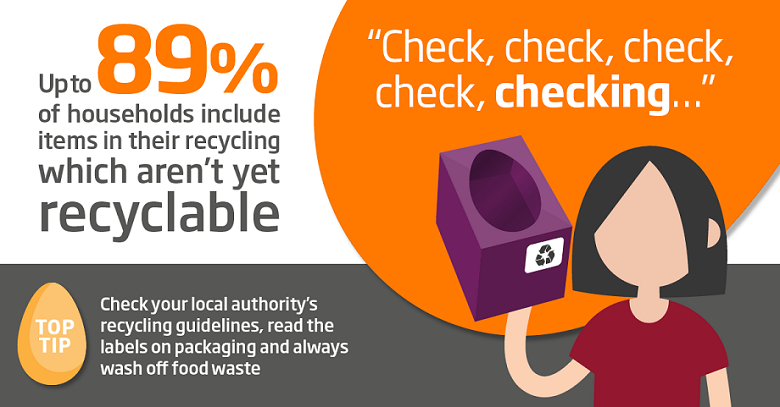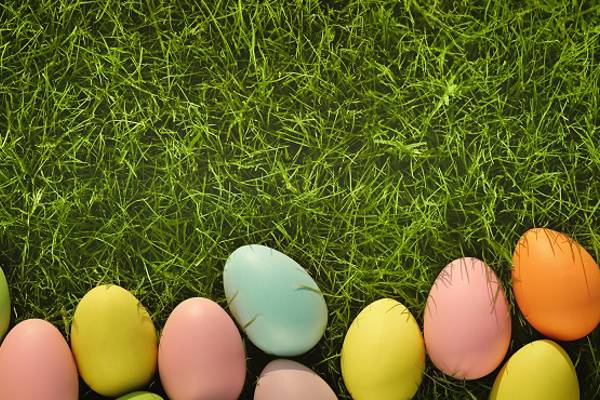An Eco-Friendly Easter: Egg Packaging and Recycling
More than 90 million Easter eggs are purchased each year in the UK creating more than 3,000 tonnes of packaging waste – so spring into action and help make sure materials intended for recycling, actually end up being recycled.
Last year, it was estimated that Brits spent more than £1 billion over the Easter period, with children receiving an average of more than eight eggs each – the UK is 4th in the world league of chocolate eating, behind only Switzerland, Germany and Austria.
It’s easy to get distracted scavenging for eggs at Easter, that’s why DS Smith has compiled three top tips to help avoid Easter egg packaging waste being sent to landfill or incineration.
Hunt for low packaging alternatives

On average, packaging alone accounts for up to a quarter of the total weight in many of the best-selling Easter eggs, with the worst offenders made up of nearly 40% packaging.
As you might imagine, the majority feel that chocolate eggs are over-packaged - a sentiment that was felt in a recent study where 62% of European consumers said they would be willing to pay more for food products that contain less plastic packaging.
Thankfully, brands and retailers are listening – In 2018, Nestlé reduced its packaging by around 30%, cutting waste by 700 tonnes, equivalent to the weight of 450 cars.
This year, challenge yourself to seek out products that not only use paper-based packaging substitutes in place of plastic, but also less packaging overall.
Segregate your Easter egg packaging

DS Smith data shows that mixed recycling is more than twice as likely to be contaminated than waste that has been separated from other streams at source. This is reinforced by our partner Reigate & Banstead Borough Council, who collect paper and card separately and supply us with over 7,000 tonnes annually – in doing so they revealed an annual saving of around £470,000 compared with fully co-mingled recycling.
To put it simply, by separating your Easter egg foil from the paper and plastic packaging, residents can help make sure that materials suitable for recycling are utilised, rather than being sent to waste.
In the case of any uncertainty around which bin to use, residents are urged to contact their local authority – you can also visit www.recyclenow.com/what-to-do-with for specific guidelines relating to your area.
Reduce wishcycling, reduce contamination

Research has found that across all materials, excluding cartons, up to 89% of residents are including items in the recycling which are not currently recyclable. As a result, recyclers are presented with a contamination challenge and materials meant for recycling might not be recycled at all.
In extreme cases, heavily contaminated recycling could end up being incinerated or sent to landfill, so it’s easy to see why only 45% of household waste in the UK ends up being recycled.
Try to limit the chance of contamination in your recycling by checking local authority guidelines, reading packaging labels, and cleaning away any food waste – oily and greasy food can have a detrimental effect on the quality of the output from recycled paper and card.
Large parts of the confectionary industry is working with DS Smith to reduce the amount of packaging. The challenge for local authorities lies in ensuring that all card is collected in streams that support quality materials for the recycling process.
Easter recycling and beyond
DS Smith has operations across Europe managing around 6 million tonnes of recovered paper every year, some of which is Easter egg boxes. We collect recycling from retailers, industrial plants and other sources, from which our Paper division manufactures new materials - strong, high quality, recycled papers. Then, the whole process starts again – the corrugated loop, box to box.
Easter is about giving and sharing, so this year give back to the planet by ensuring that any waste is disposed of effectively.
